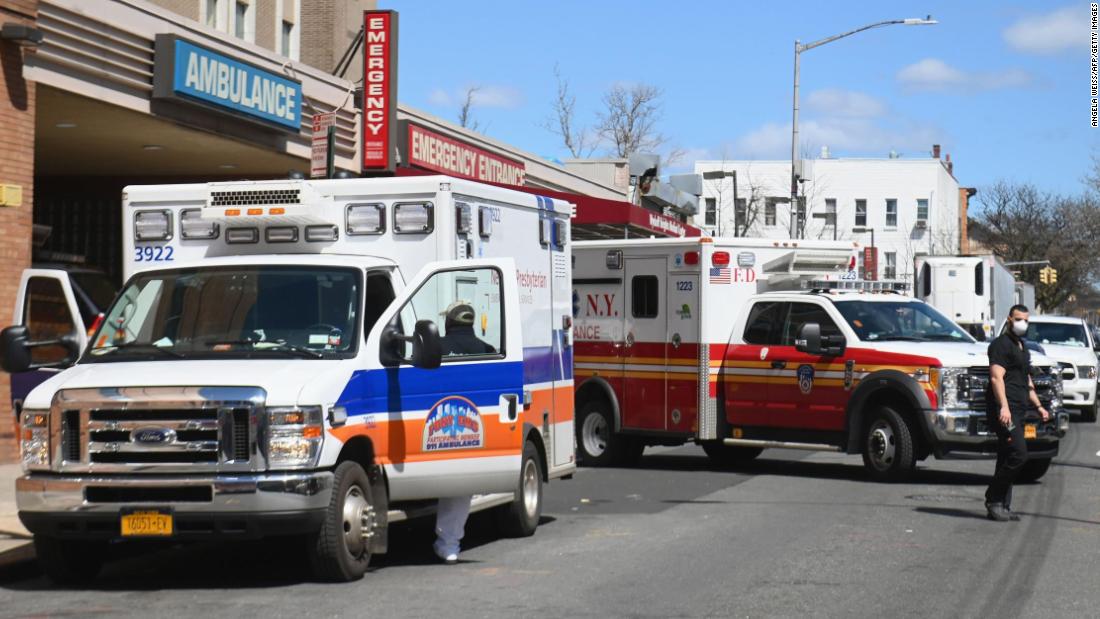[ad_1]
If the current rate of hospitalization and intubation continues in New York, “we have about six days” left of ventilators in the stockpile, Gov. Andrew Cuomo said during Thursday’s coronavirus briefing.
“If a person comes in and needs a ventilator and you don’t have a ventilator, the person dies. That’s the blunt equation here,” Cuomo said.
It is essentially a point system calculating a patient’s likelihood to benefit from ICU care, based on two considerations: 1) saving the most lives and 2) saving the most life-years.
The lower the patient scores, the higher their prioritization for care. In the system’s eight-point scale, the first four points illustrate the patient’s likelihood to survive hospitalization, and the last four points assess whether, assuming they survive hospitalization, they have medical conditions associated with a life expectancy of less than one year or less than five years.
In the event of a tie, White’s framework directs doctors to consider life cycle, with priority being given to younger patients.
“These are inevitably tragic choices with only bad options,” White said. “But the only thing worse than developing a clear allocation framework is not developing one, because then decisions made during a crisis will be biased and arbitrary.”
White said that his framework is meant to be inclusive and nondiscriminatory against people with disabilities.
“It is critical to make clear that stereotypical judgments about quality of life have no role in these decisions, and no one is disqualified from treatment because of disabilities,” White said.
In 2007, White said he reviewed the existing recommendations for the allocation of critical care resources and realized those recommendations were often based on “exclusion criteria,” which simply barred access to critical care for large groups of people during a public health crisis.
“Advanced age, severe cognitive impairment and chronic heart and lung diseases were all used as exclusion criteria. That didn’t seem ethical to me. Exclusion criteria send the wrong message that there are some lives that are not worth saving,” White said.
This could lead to a perception of unfairness, he has said, during a public health emergency where trust is essential. By contrast, the framework White and his team developed ensures no one is disqualified from critical care from the outset.
“Everyone who is normally eligible for intensive care remains eligible in a public health emergency,” White said.
But since early March this year, his email has been flooded by hospitals’ requests for guidance. UPMC confirmed that its 40 hospitals have since adopted the framework, and White said the state of Pennsylvania has implemented interim guidance to public hospitals based on his framework as well. Pennsylvania’s Department of Health would not give details on the basis for their interim guidelines but said they intend to publish final guidelines soon.
That is hardly a solution, White said after reviewing the new Alabama guidelines.
“So their crisis standard of care guidance now basically provides no guidance to doctors about what to do in the face of ventilator shortages, which of course introduces its own thicket of problems around variability and bias,” White wrote in an email.
Two other states, Tennessee and Kansas, had guidelines that excluded some people from care in the event of a pandemic emergency, but pulled the guides offline on Friday after a CNN reporter inquired about them.
“The document you’re referencing is an old one not intended for COVID-19 response. We are working to update our guidelines,” a Department of Health spokesperson wrote.
That kind of forethought by specialists is important, White has argued, so that doctors facing a pandemic don’t have to struggle with such dire ethical questions case by case. White believes that triage committees should be created of non-frontline doctors, to “enhance objectivity, avoid conflicts of commitments, and minimize moral distress.”
“For the first time in our experience, we have to balance the well-being of the community with the well-being of individual patients, which is usually our sole focus,” Byock said.
But even with the ethical guidance that a framework like White’s provides, Truog said, that responsibility means the road ahead for American doctors will not be easy.
“It could very well be the case that in the next few days physicians are going to have to make decisions that they never even contemplated before, and the emotional toll for some is going to be absolutely disabling,” Truog said.
[ad_2]
Source link





